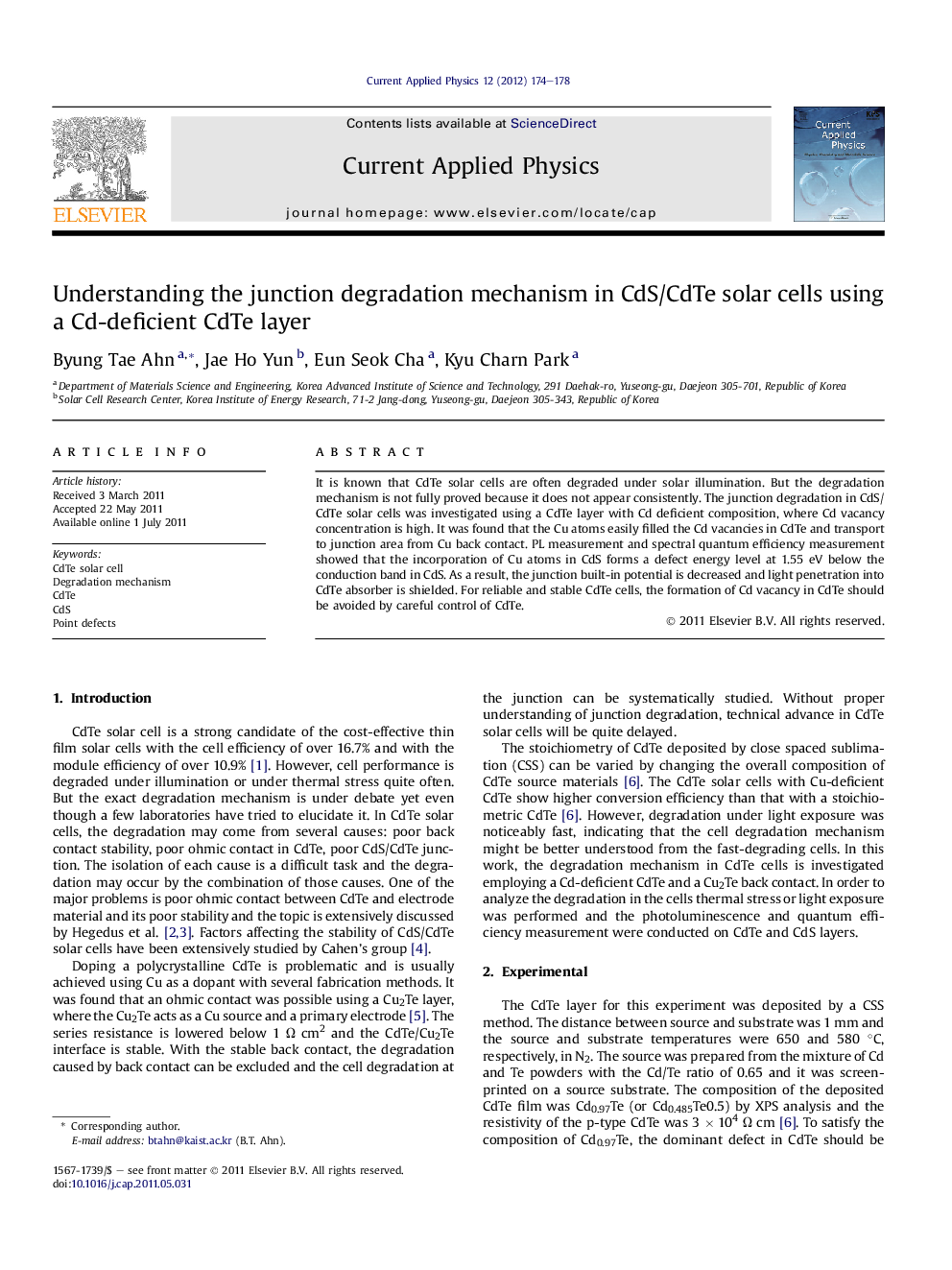| Article ID | Journal | Published Year | Pages | File Type |
|---|---|---|---|---|
| 1787020 | Current Applied Physics | 2012 | 5 Pages |
It is known that CdTe solar cells are often degraded under solar illumination. But the degradation mechanism is not fully proved because it does not appear consistently. The junction degradation in CdS/CdTe solar cells was investigated using a CdTe layer with Cd deficient composition, where Cd vacancy concentration is high. It was found that the Cu atoms easily filled the Cd vacancies in CdTe and transport to junction area from Cu back contact. PL measurement and spectral quantum efficiency measurement showed that the incorporation of Cu atoms in CdS forms a defect energy level at 1.55 eV below the conduction band in CdS. As a result, the junction built-in potential is decreased and light penetration into CdTe absorber is shielded. For reliable and stable CdTe cells, the formation of Cd vacancy in CdTe should be avoided by careful control of CdTe.
► The junction degradation in CdS/CdTe solar cells was investigated using a Cd-deficient CdTe film where Cu can diffuse easily through Cd vacancy. ► The incorporation of Cu atoms in CdS forms a defect energy level at 1.55 eV below the conduction band in CdS. ► The junction built-in potential is decreased and light penetration into CdTe absorber is shielded. ► For reliable and stable CdTe cells, the formation of Cd vacancy in CdTe should be avoided by careful control of CdTe.
